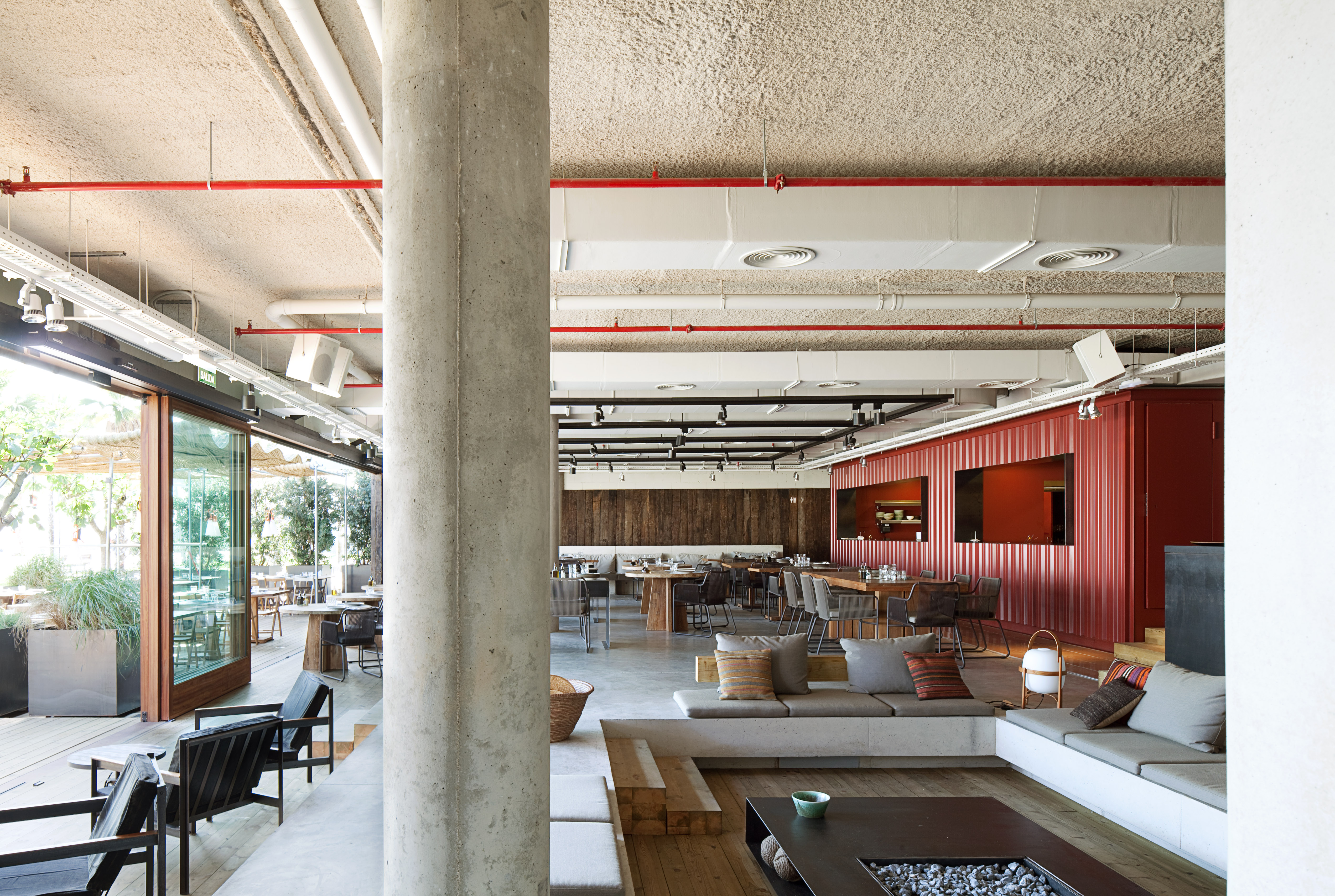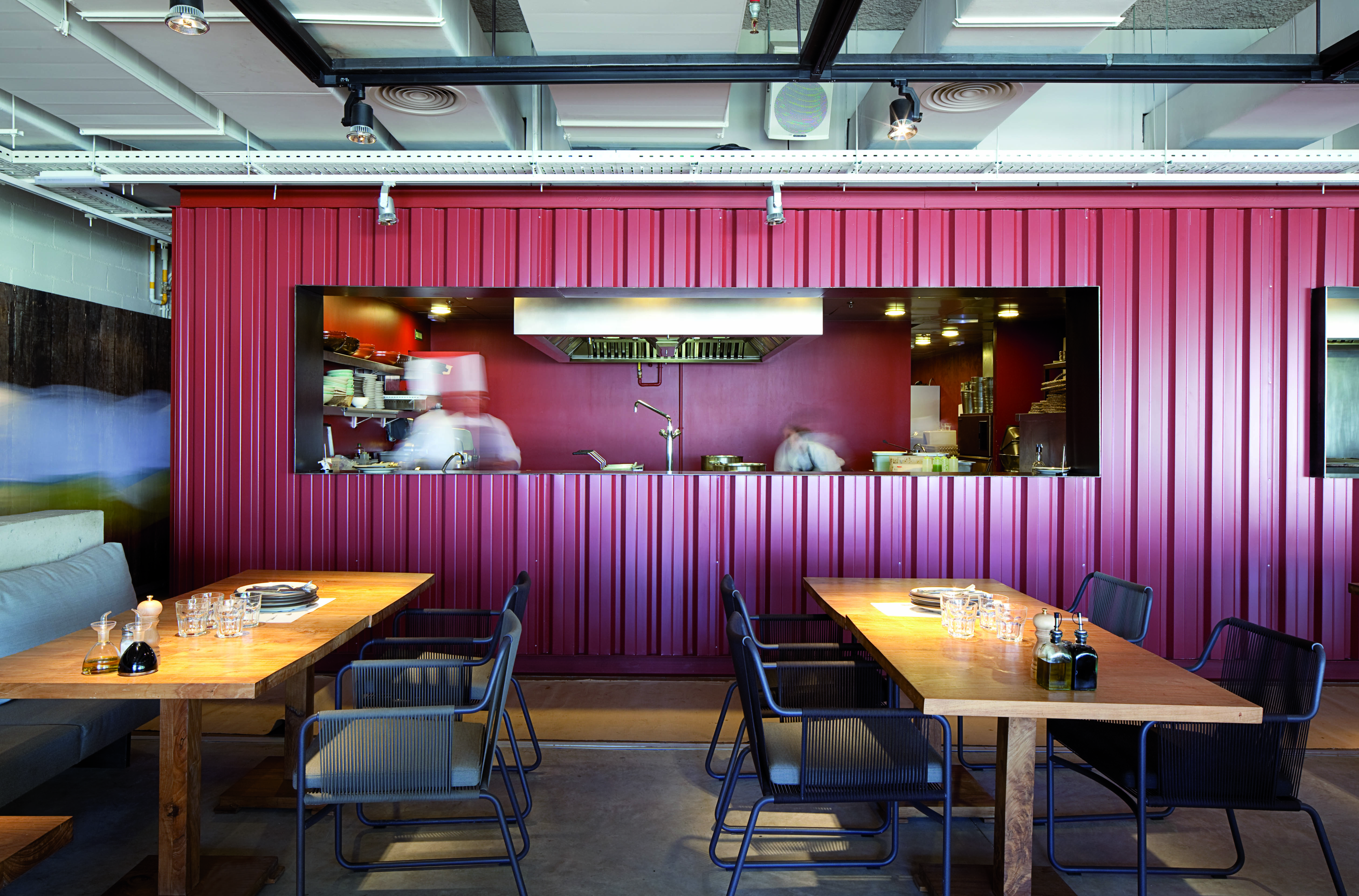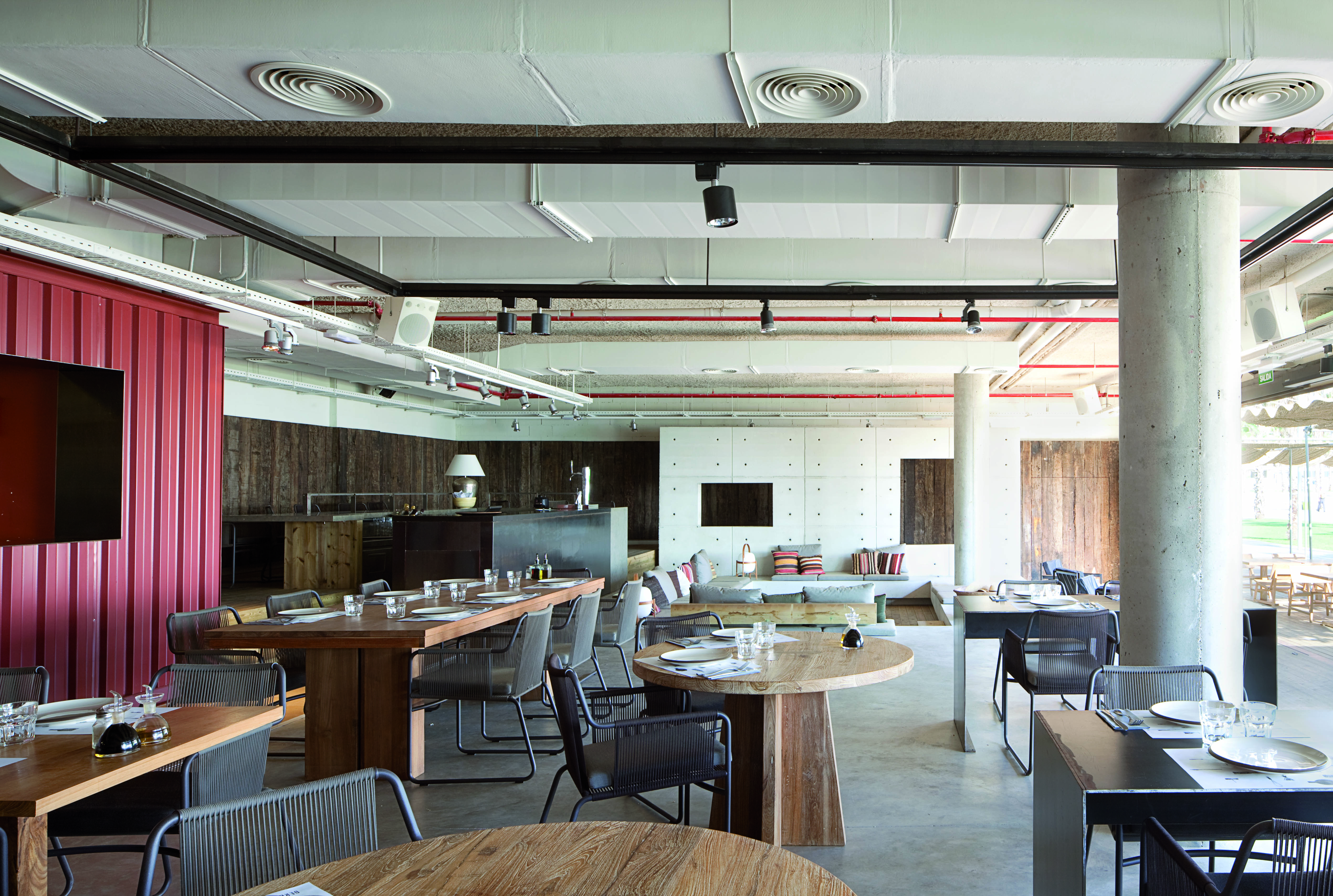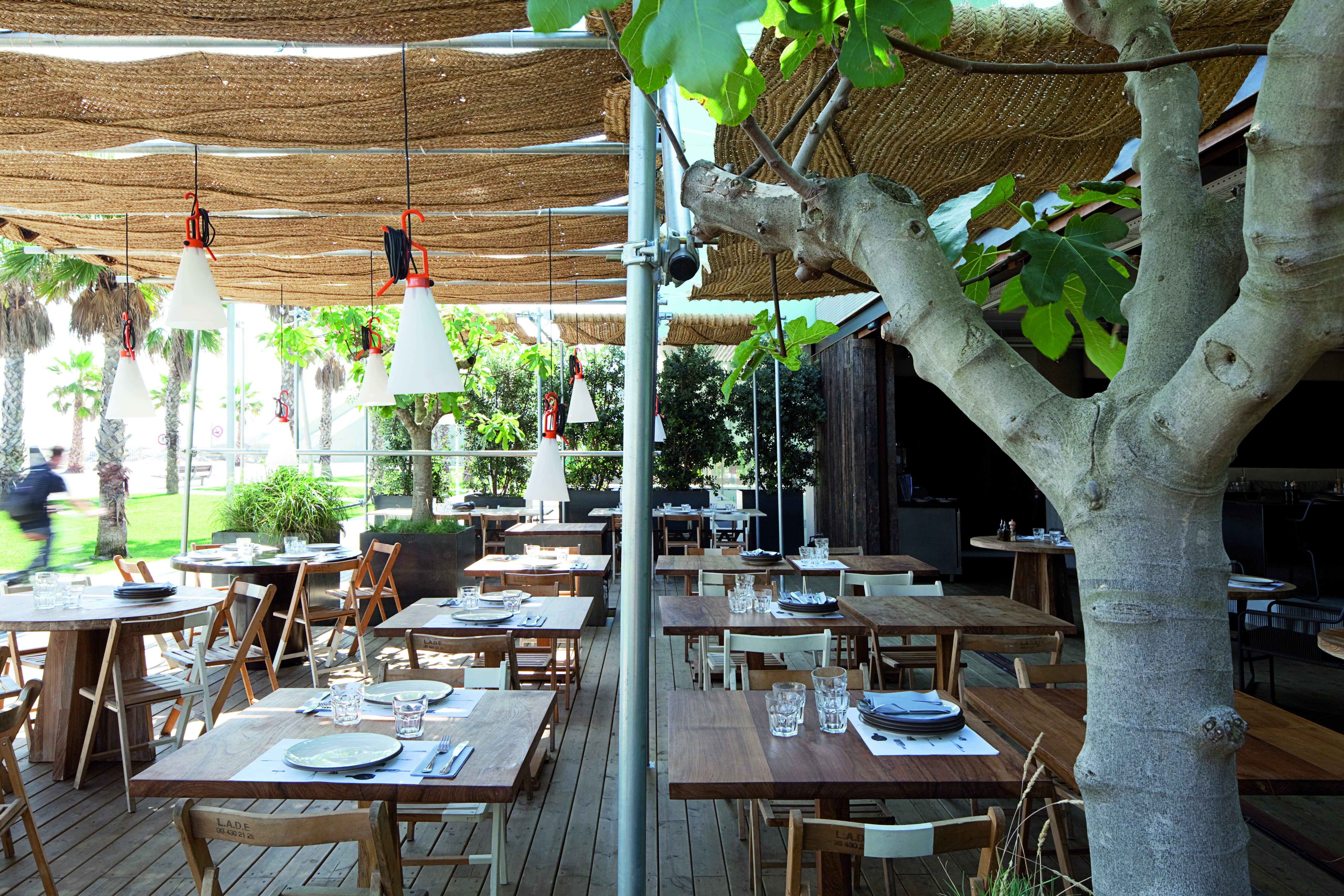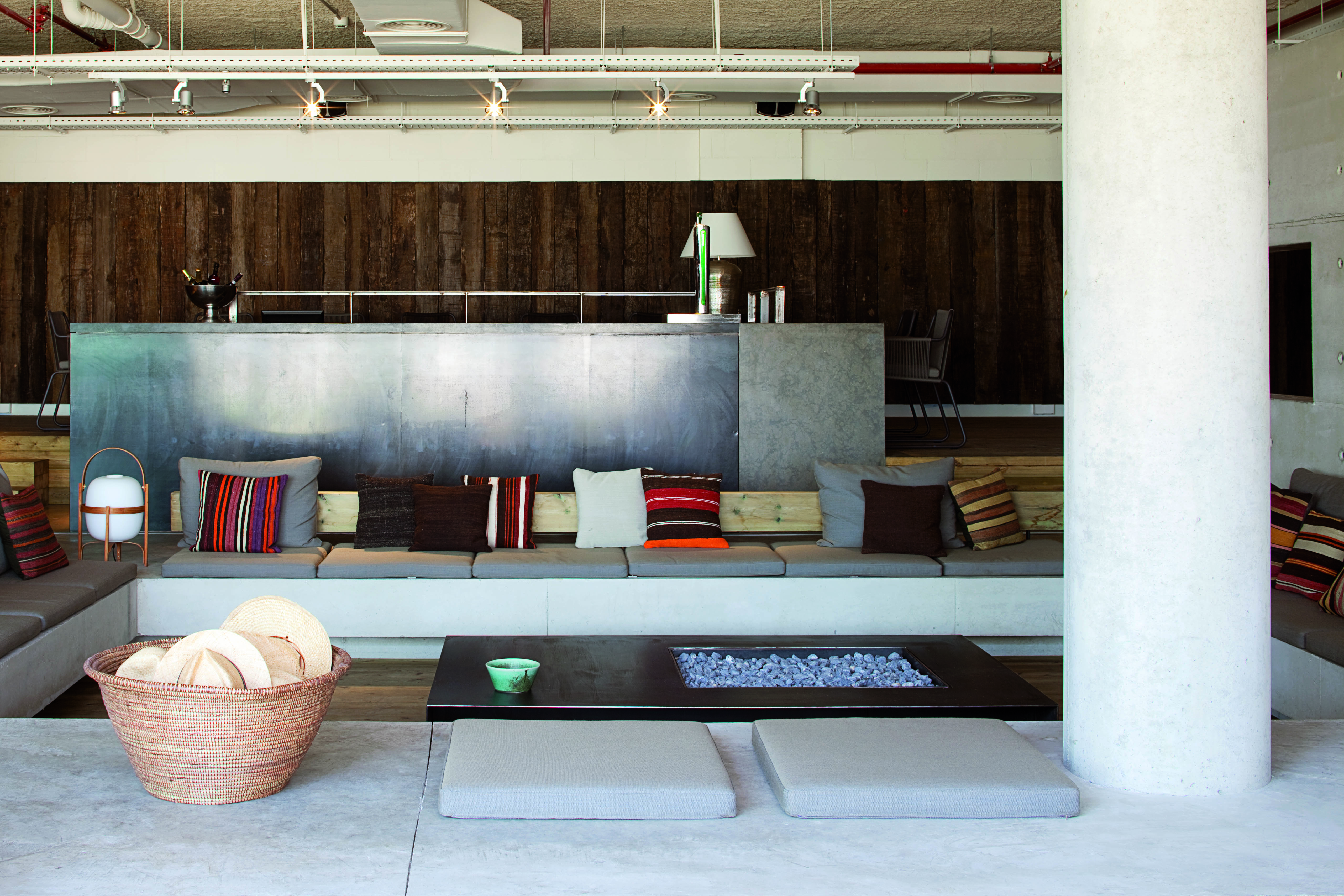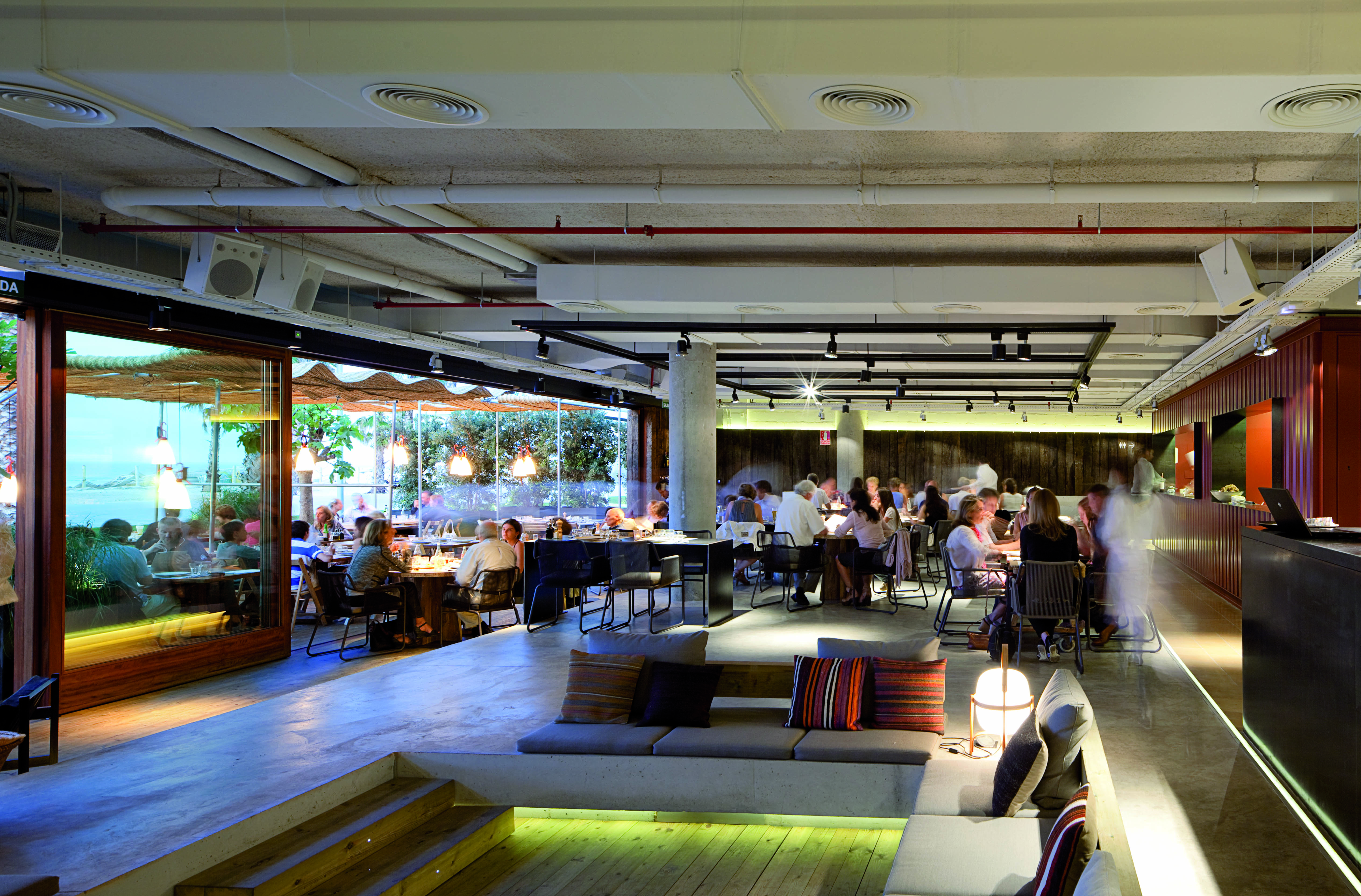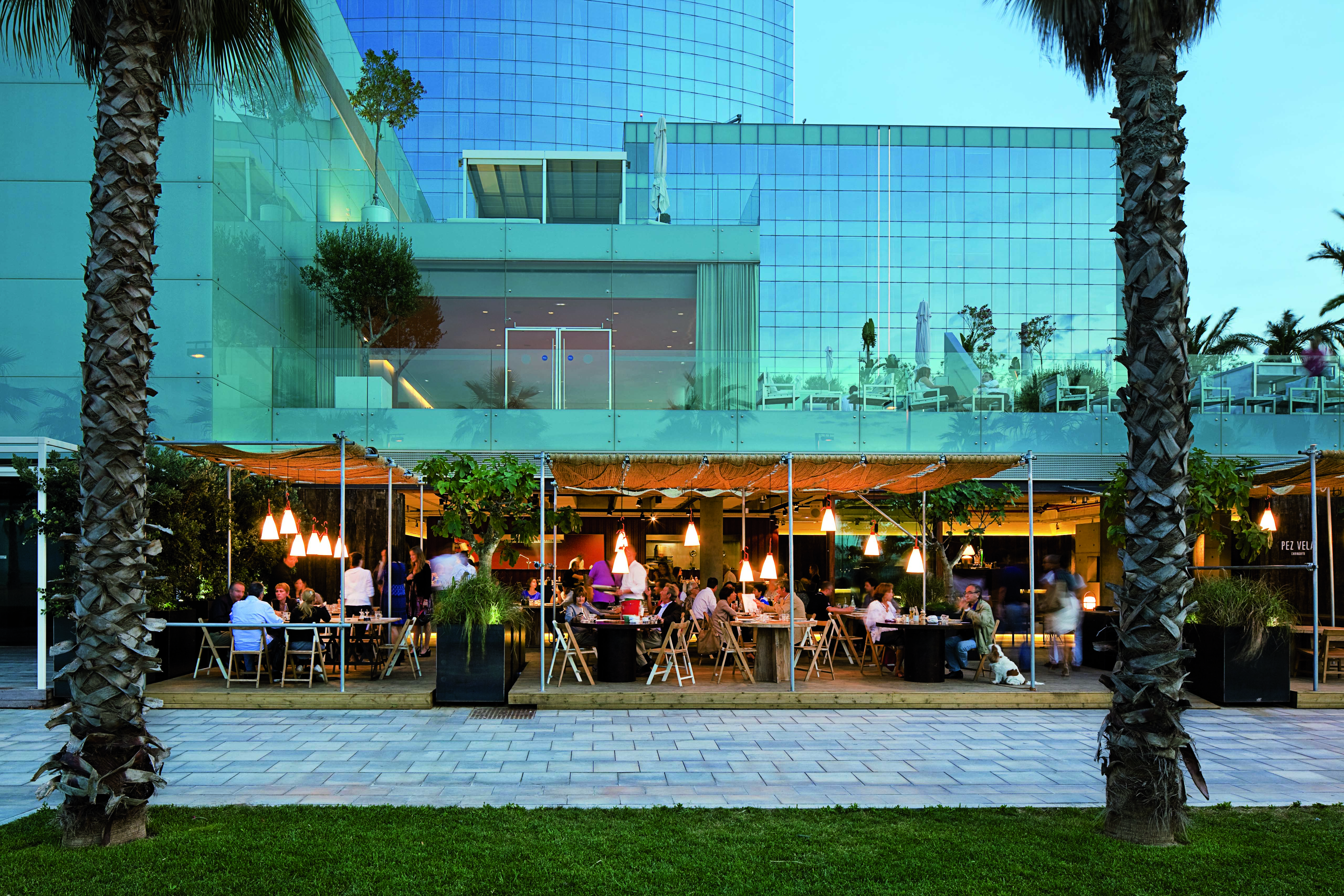The new project by Sandra Tarruella Interioristas is the chiringuito Pez Vela, at the base of the W Hotel in Barcelona. A chiringuito is a casual beach restaurant, and the Pez Vela is intentionally informal, youthful and fresh – an especially enjoyable place in summertime. Nonetheless, the presence of woods and a fireplace also make it equally inviting in winter. The menu is mostly based on fish and rice dishes, combined with other classics of Grupo Tragaluz.
The project erases the limits between indoors and outdoors and distributes the space in three levels to ensure that all patrons can enjoy a sea view, which is the key feature of this location. Light is another crucial element of the project, as it allows for a modulation of the space, adapting it to the occupancy and the season of the year. The space is lit as if it were a theatre set: light can be focused in the central part of the dining room when there are few guests, or fill up the whole periphery of the restaurant when it is complete. The ceiling light is combined with a very warm light from lamps with screens.
The terrace is located on a wooden platform that evens up the slope of the outdoor pavement. Tables and rows of potted fig trees and grass are distributed on this platform, as well as an outdoor bar. This level of pavement continues into the indoor area. The terrace is partially covered by a pergola designed from dismountable scaffolding and Sevilla-style esparto shutters.
The façade combines parts of blind wall cladded with recovered wooden slats, and large sliding doors of ipe wood and glass. This gives the possibility of opening up almost the entire façade in summertime, hence eliminating the separation between inside and outside. The sliding doors become totally concealed inside the blind wall segments.
Inside the restaurant, a U-shaped concrete slab organises the space, creating a sort of carpet floating above the wooden floor that continued from the outside terrace. Tables and a lounge area are located on this slab. One of the branches of the U doubles as a concrete banister, supporting a long wooden bench. The other branch turns up to a height of 2 metres, hence creating a large wall with openings. Both ends of the U hide the ramps for accessing the other levels of the restaurant. At one side of this U-shaped slab there is a waiting lounge sunken in the pavement, with peripheral benches and a fireplace in the centre.
In the back, there is the front of the open kitchen and bar. The kitchen is presented as it is, open to the dining area, allowing guests to see the preparation of the dishes. The kitchen is contained in a volume cladded with corrugated steel painted in red, giving it the look of a shipping container. This, together with the other steel elements of the kitchen, gives this large volume an industrial character, as if it were a machine placed inside the restaurant.
The bar is located between the level of the concrete slab and the top level of the restaurant, creating a table-high seated dining area in the back upper area, which offers a view over the entire restaurant and the sea. Both the ceiling and the peripheral walls are left naked, just as they were in the original building. Only on the walls there is a recovered wood cladding matching the one on the façade, up to a height of 2 m. Above this height, a perimetric light bathes the off-white-painted concrete-block walls.
The ceiling is covered with an off-white sprayed acoustic foam and the pipes remain visible. Only the black metal structures that hold the spotlights hang lower from the ceiling. This creates a theatre-set atmosphere through a spectacular lighting scheme that adapts the space to its occupancy.
Finally, the project includes also a more secluded room which may be used for private parties, with a direct access to the terrace.















